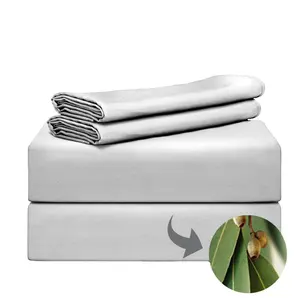A Comprehensive Guide to Absorbent Bamboo Fabric
The textile industry is continuously evolving, and absorbent bamboo fabric has emerged as a sustainable frontrunner. This fabric category is renowned for its softness, eco-friendliness, and versatility. Sourced from the pulp of bamboo plants, this material is transformed into fibers that are then woven into a fabric known for its exceptional absorbency and soft texture.
Types and Blends of Bamboo Fabric
Within the realm of bamboo textiles, various types and blends offer unique benefits. Bamboo terry cloth fabric is a popular choice for items requiring a plush, towel-like feel, while bamboo hemp fleece provides a durable yet soft option, ideal for cozy apparel. Blends such as viscose bamboo fabric combine the best of bamboo with other fibers to enhance functionality and texture.
Applications of Absorbent Bamboo Fabric
The applications of absorbent bamboo fabric are extensive. Its natural absorbency makes it perfect for organic bamboo terry cloth fabric used in towels and bathrobes. Additionally, its breathability and thermal-regulating properties are why it's found in bed linens, ensuring comfort throughout the night. The fabric's hypoallergenic qualities also make it suitable for clothing, catering to sensitive skin.
Features and Advantages of Bamboo Fabric
Bamboo fabric boasts numerous features that contribute to its growing popularity. Its inherent antibacterial properties help in reducing odors, while its moisture-wicking capabilities keep the skin dry. The fabric's sustainability is another significant advantage, as bamboo is a fast-growing, low-impact resource. Moreover, the fabric's durability ensures a longer lifespan for products, reducing the need for frequent replacements.
Materials and Sustainability
The raw material for absorbent bamboo fabric is sourced from bamboo, which requires no pesticides and little water to grow, highlighting its sustainability. The process of turning bamboo into fabric can vary, with methods like the closed-loop system being more environmentally friendly. Consumers seeking eco-conscious textiles are increasingly turning to bamboo fabric for its minimal environmental footprint.
Choosing the Right Bamboo Fabric
When selecting bamboo fabric, it's essential to consider the specific needs of the end product. For instance, bamboo terry cloth fabric is excellent for absorbent layers in baby products, while bamboo hemp fleece is robust enough for outerwear. The marketplace offers a variety of bamboo fabric by the yard, allowing for tailored solutions to meet diverse requirements.
Alibaba.com facilitates the connection between buyers and a wide array of suppliers, ensuring a diverse selection of bamboo fabric options to suit any application. By choosing this sustainable fabric, customers are not only making an eco-friendly choice but also investing in a material known for its comfort and durability.






































 浙公网安备 33010002000092号
浙公网安备 33010002000092号 浙B2-20120091-4
浙B2-20120091-4